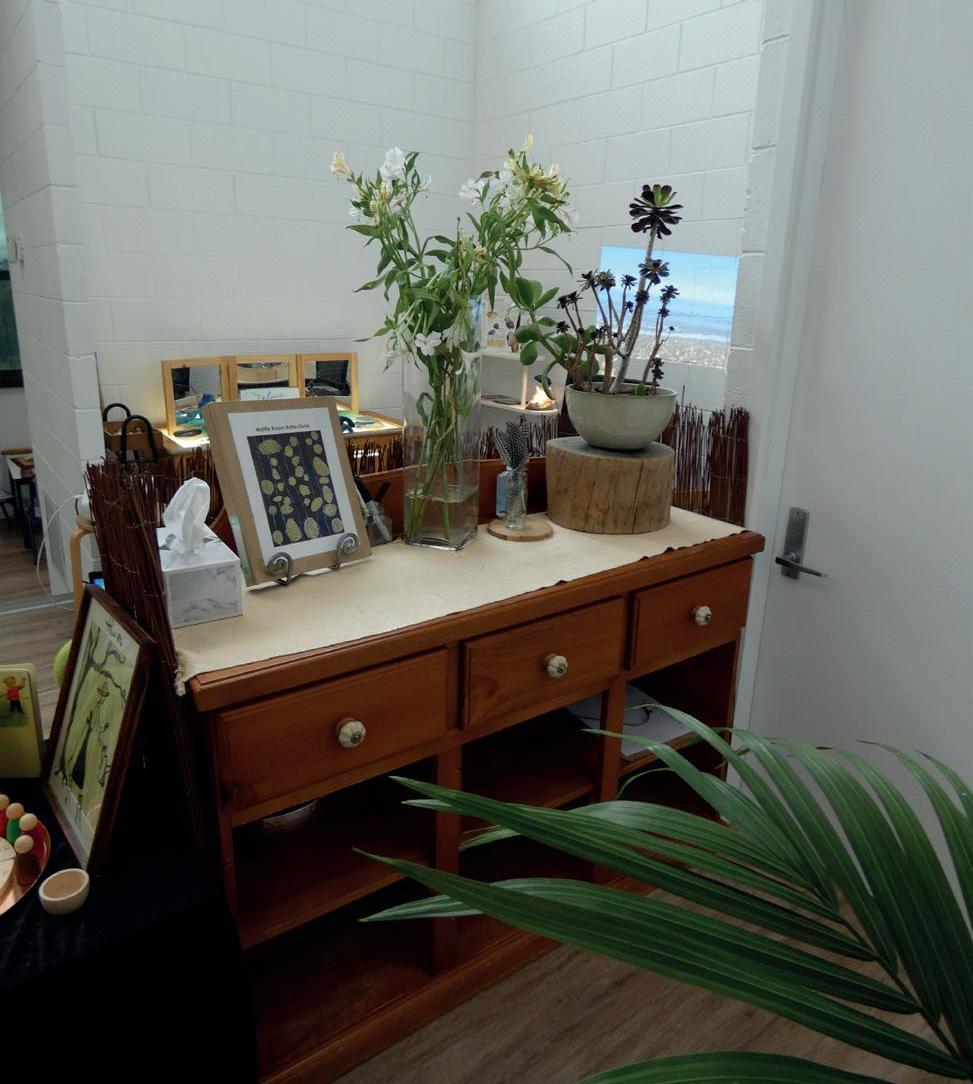
2 minute read
Early Learning Centre Refurbishment
THE ELTHAM COLLEGE EARLY LEARNING CENTRE (ELC) WAS TRANSFORMED WITH A REFURBISHMENT TAKING PLACE OVER THE LAST SUMMER HOLIDAYS.
The space is looking delightfully fresh, warm and inviting. We have had an overwhelming amount of positive feedback on the ‘facelift’ by our returning families, the children and new families to the centre.
The ELC building was opened in 1973 with an additional classroom extended onto the building in 2000. Whilst the space had a very ‘homely’ feel to it, it was looking very tired as both the internal and external walls were the original 70s paint colours and the carpet was in dire need of replacing (we had become quite skilled at placing furniture over bare patches of the carpet).
Careful thought and planning was put into the aesthetic ‘feel’ the refurbishment would create. Whilst there is a place for colour, evidencebased research has shown the negative eff ect that particular colours and heavily decorated classrooms can have on the emotions and ability of children to focus on working in such classrooms.
Like with the aesthetic feel of the refurbishment, each day the ELC team carefully consider the design of the learning environments so the spaces are welcoming, engaging, foster a love of learning and invite children to engage with one another and build relationships. An integral theory of the Reggio Emilia Approach is that of the environment as the third teacher. This view sees the design and use of space as encouraging encounters, communication and relationships. Each space has an identity and purpose, and is rich in its potential to engage and communicate. The new fl ooring has created fl exibility in regards to how and where learning spaces are set up. Art experiences such as painting can now be placed anywhere in the room, utilising the natural light coming through the windows. Previously, such experiences had to be set up in the same place on tiles, and this was also the case with meal times.
With greater fl exibility with learning spaces, utilising elements such as natural light, ‘nooks’, the installation of interactive whiteboards and digital projectors, and the purchase of purposebuilt furniture have all added a new dimension to teaching and learning. We have observed the children engage in the learning spaces and with the learning resources in diff erent ways – with more curiosity. It has also seemed to provoke more collaborative learning as children share their discoveries with one another.

We extend a warm welcome to anyone wanting to come and visit the ELC to see these beautiful learning spaces in person.
Kathryn Barclay Head of Early Learning Centre









